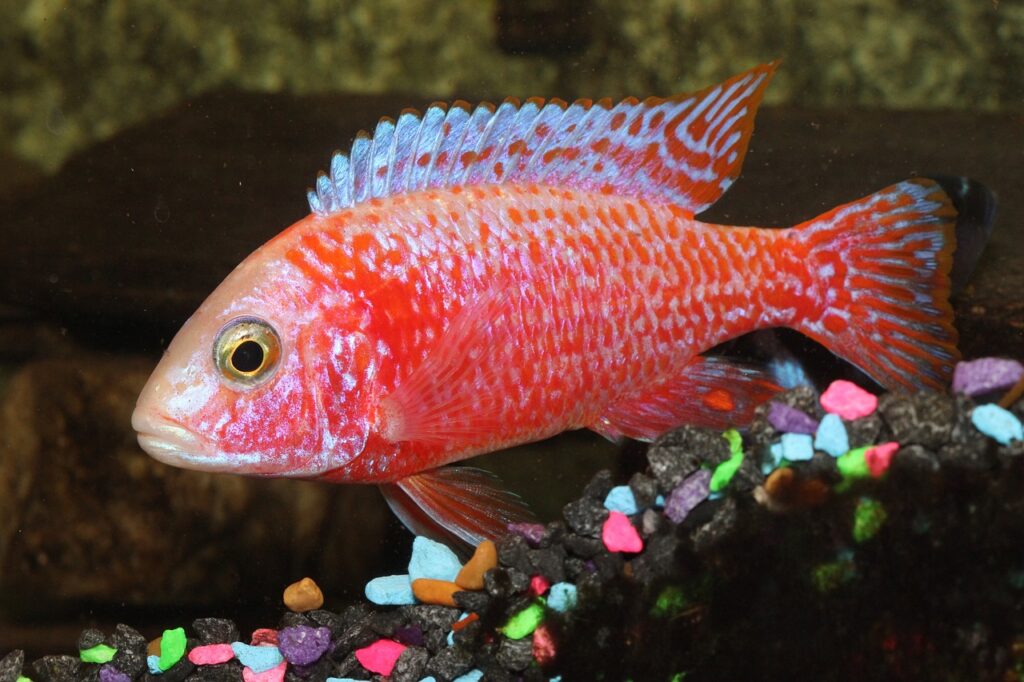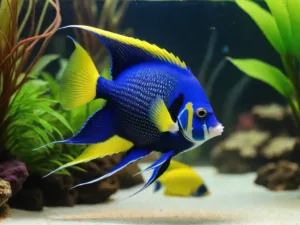When it comes to setting up a large tank, choosing the right fish is crucial. A well-stocked large tank can be a stunning centerpiece in any home, but if the wrong fish are selected, the tank can quickly become a nightmare to maintain.
So, what factors should you consider when selecting fish for a large tank? Here are some of the most important:
- Size of the fish: A large tank can accommodate bigger fish, but it’s important to ensure that the fish you choose won’t outgrow the tank. Always research the maximum size of any fish you’re considering before making a purchase.
- Activity level of the fish: Some fish are more active than others, and a large tank can be a great environment for energetic fish. However, if you have a more peaceful community of fish, you’ll want to avoid adding overly active species.
- Compatibility with other fish in the tank: Not all fish get along with each other. Research which species are compatible with each other and which are not before adding them to your tank.
- Water parameters and temperature requirements: Different fish have different requirements when it comes to water temperature, pH levels, and other water parameters. Make sure you choose fish that have similar requirements, so they can all thrive in the same environment.
- Feeding habits: Some fish are picky eaters, while others will eat just about anything. Make sure you choose fish that have similar feeding habits to avoid any issues with over- or underfeeding.
The best fish for large tanks
Discus Fish:

Discus fish are native to the Amazon River basin, and are known for their distinctive round shape and bright colors. They’re a bit more high-maintenance than some other fish, requiring very clean water and a specific pH range to thrive. However, with the right care, they can be a stunning centerpiece in any large tank. Discus fish are social and should be kept in groups of six or more, and they prefer to live in densely planted tanks with plenty of hiding places. They can be shy at first, but with patience, they can become quite friendly and curious.
Angelfish:

Angelfish are a popular choice for large tanks due to their graceful appearance and variety of color patterns. They are peaceful and easy to care for, making them a great choice for beginners. They are omnivorous and can be fed a diet of both flakes and live food. Angelfish can grow up to 6 inches in length and are best kept in pairs or small groups, with plenty of plants and hiding spots.
Oscar Fish:

Oscar fish are native to South America and are known for their bold personalities and vibrant colors. They are relatively large and can grow up to a foot in length, so they require a spacious tank. They are carnivorous and require a diet of live or frozen foods. Oscars can be territorial, so they should be kept with other fish that are able to hold their own. They can also be trained to recognize their owner and can be quite interactive.
Cichlids:

Cichlids are a large and diverse family of fish that come in a wide range of sizes, shapes, and colors. They are known for their unique behaviors and personalities, and can be a great addition to any large tank. Some popular species of cichlids include the African cichlid, the Jack Dempsey, and the Firemouth cichlid. Different species of cichlids have different requirements when it comes to water parameters and feeding, so it’s important to research the specific needs of any cichlids you’re considering.
Rainbow Fish:

Rainbow fish are native to Australia and are known for their striking colors and shimmering scales. They are peaceful and easy to care for, making them a great choice for beginners. Rainbow fish are social and should be kept in groups of six or more, with plenty of hiding spots and plants. They are omnivorous and can be fed a diet of flakes and live food. Rainbow fish can grow up to 6 inches in length and are best kept in tanks with plenty of open swimming space.
Silver Dollar Fish:

Silver dollar fish are known for their distinctive shape and silvery scales. They are peaceful and can be a great addition to a large community tank. Silver dollar fish are omnivorous and can be fed a diet of both flakes and live food. They can grow up to 6 inches in length and should be kept in groups of six or more, with plenty of plants and hiding spots.
Plecostomus:

Plecostomus, also known as “plecos,” are a type of catfish that are often used as bottom-feeders in large tanks. They are great at keeping the tank clean, and their unique appearance can be a great addition to any tank. Plecos are omnivorous and can be fed a diet of algae wafers and fresh vegetables. They can grow up to 2 feet in length, so they require a spacious tank with plenty of hiding spots.
Bala Shark:

Bala sharks are known for their torpedo-like shape and distinctive silver scales. They are active swimmers and can be a great addition to a large tank, but they do require a lot of open swimming space. They are omnivorous and can be fed a diet of both flakes and live food. Bala sharks can grow up to 12 inches in length, so they require a spacious tank with a lot of swimming space. They are peaceful and can be kept in groups of six or more, but they can become territorial if their space is not adequate.
Gouramis:

Gouramis are a group of fish that come in a wide variety of sizes, shapes, and colors. They are known for their unique behaviors and personalities, and can be a great addition to any large tank. Some popular species of gouramis include the dwarf gourami, the pearl gourami, and the kissing gourami. Gouramis are omnivorous and can be fed a diet of flakes and live food. They can grow up to 6 inches in length and are best kept in tanks with plenty of hiding spots and plants.
Best large community fish
When it comes to creating a community tank, it’s important to choose fish that can coexist peacefully with each other. Some of the best large community fish include angelfish, gouramis, tetras, and rainbowfish. These species are all known for their peaceful nature and ability to get along well with other fish. Additionally, they come in a wide variety of colors and sizes, making them a great choice for creating a visually appealing tank. As always, it’s important to research the specific needs of each species and ensure that your tank provides an appropriate environment for all of its inhabitants.
Q&A: Best Fish for Large Aquariums
What are the best fish for a large aquarium?
There are several species of fish that are well-suited for large aquariums, including angelfish, discus, rainbowfish, gouramis, and tetras. These species are known for their peaceful nature and ability to coexist with other fish in a community tank.
What types of fish require a very large aquarium?
Some species of fish, such as arowana, pacu, and red-tailed catfish, require a very large aquarium with plenty of swimming space. These fish can grow to be several feet in length and need a lot of room to move around comfortably.
Can betta fish be kept in a large aquarium?
Betta fish can be kept in a large aquarium, but it’s important to ensure that the tank is properly set up for their needs. They require plenty of hiding spots and plants, and a temperature range of 78-80°F. Additionally, they should be kept with other peaceful fish and fed a diet of live or frozen food.
What are the best large community fish for a large aquarium?
When it comes to creating a community tank, some of the best large fish species to consider include angelfish, gouramis, tetras, and rainbowfish. These fish are known for their peaceful nature and ability to coexist with other fish in a community tank.
How can I ensure my large aquarium is suitable for my fish?
It’s important to research the specific needs of each fish species and ensure that your tank is set up to meet those needs. This includes providing adequate space, water quality, temperature, and diet. Additionally, it’s important to monitor your fish for any signs of stress or illness and make adjustments to the tank as needed.
References used for this article
- Aquarium Co-Op
- Fishkeeping World
- The Spruce Pets
- LiveAquariahttps://www.liveaquaria.com/
- FishLore











